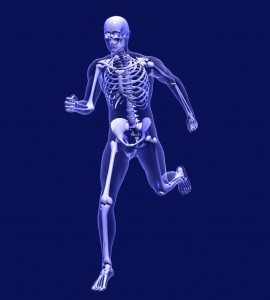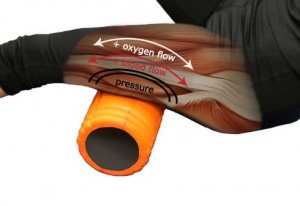It has been a while since my last post. To be honest, I have been busy with preparing/presenting my live seminar last week and webinars, as well as fulfilling my writing obligations and clinical role. So, I have been taking a “break” from blogging and recharging the battery so to speak.
Now I am getting back to it. The great thing about presenting though is that I am consistently reading and reviewing the latest research on topics related to my presentations and closely examine my rehab and exercise philosophy. In my clinic, I treat many runners for knee pain.

The average profile is an experienced runner b/w the ages of 25 and 50 who logs 20 – 35 miles per week and routinely competes in half marathons or some sort of triathlons.
Common injuries include IT band problems versus lateral meniscus tears versus patellofemoral pain. Often, I uncover the following things related to kinetic chain deficiencies:
- Elevated or rotated inominate
- Ankle dorsiflexion restriction (OH squat assessment)
- Poor single leg stance
- Weak lateral myofascial chain
- TFL dominance
- Excessive femoral internal rotation/adduction with single leg squats
- Tightness in hip flexors, ITB and soleus
Many currently debate the efficacy of foam rolling. Is it worthwhile? Some say yes, while others say no.
Personally, I like using it pre-run as part of my movement prep routine for running. I also am fine with it as part of cool down and recovery.

There was a recent article in the Journal of Strength and Conditioning Research that looked at acute foam rolling with the quadriceps. (Click here for the abstract) The study looked at 11 healthy male subjects’ quadriceps maximum voluntary contraction force, evoked force and activation, and knee joint ROM were measured prior to, 2 minutes and 10 minutes following two conditions; 1) two (1) minute trials of SMR of the quadriceps via a foam roller and 2) no SMR (Control)
In a nutshell the key takeaways were:
- ROM significantly (ρ < 0.001) increased by 10 and 8% at 2 and 10 minutes after rolling
- No concomitant decrease in muscle function
- No change in neuromuscular variables
So, this article suggests that rolling improves motion with respect to the quadriceps. The IT band is another creature and I am not sure if I believe we can impact its length or not. However, I feel we can impact the soft tissue around it.
How does all this tie in with stretching. Well, I always advocate dynamic movement prior to running. I use activities such as high knee lift with a calf raise, hip cradles, lunges, straight leg marches and butt kickers to name a few. Previous research done by Fowles et al. J Appl Physiol 1999 regarding static stretching revealed:
- Negative impact on stiffness & muscle firing
- 13 maximally tolerable passive stretches resulted in a 25% ↓ in MVC of the plantar flexors & depressed motor unit activation
- Activation was restored 15 minutes later, but MVC was still depressed 12-15%
What about the impact on strength training? More recent research in the 2012 Journal of Strength and Conditioning Research looked at effects of static stretching (SS), ballistic stretching (BS), and proprioceptive neuromuscular facilitation (PNF) stretching on maximal strength, # of repetitions at a sub-maximal load, and total volume (i.e., number of repetitions × external load) in a multiple-set resistance training bout. Click here for the abstract. They analyzed 1 RM and 80% of 1RM leg press after stretching and found:
- Leg press1RM value decreased after PNF only
- All stretching reduced reps & total volume
So, the evidence is pretty clear that static stretching can have a deleterious effect on muscle performance when done ahead of time. While I think we need continued studies on foam rolling, I see clinical and personal results from using it. Mobilizing tight structures such as the gluts, TFL, piriformis and soleus have been especially beneficial for my clients. I do not run without first working my soleus with my GRID from TP therapy as I see an incredible difference in the degree of tightness/tension in the lower leg when I run. Soft tissue mobilization is a plus prior to activity/competition in my mind.
Follow this with a general warm-up designed to target the core, hips and legs with ample single leg work to activate the nervous system and set the optimal level of stiffness in the muscles. Last, enjoy some stretching (and more rolling) after the performance or training run has ended. Choosing the specific stretches and rolling exercises is based solely on client needs and limitations as the primary goal is sufficient mobility to ensure proper movement patterns and gait mechanics.
Remember, do not stretch to warm-up as this may be hindering your runs. Utilize foam rolling to resolve myofascial tightness and integrate a dynamic warm-up to groove the proper neuromuscular patterns prior to hitting the road. Finish up with stretching and more foam rolling as desired. Stay tuned as I think we will see more science related to the efficacy of foam rolling and self MFR moving forward.

